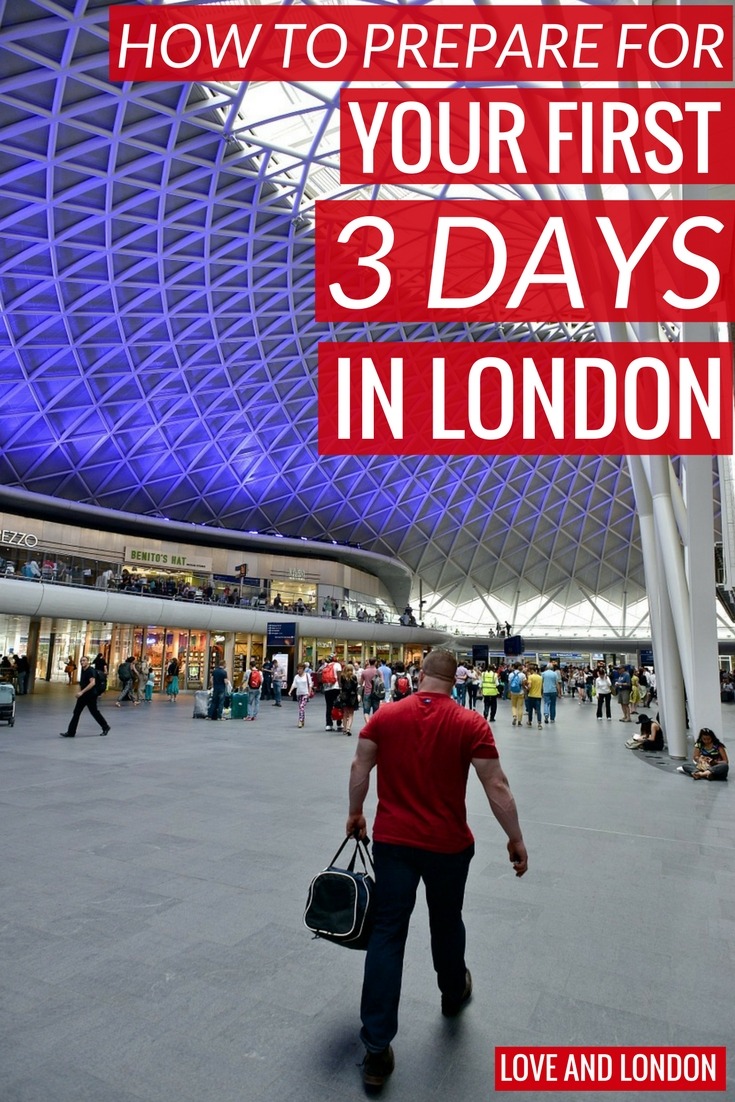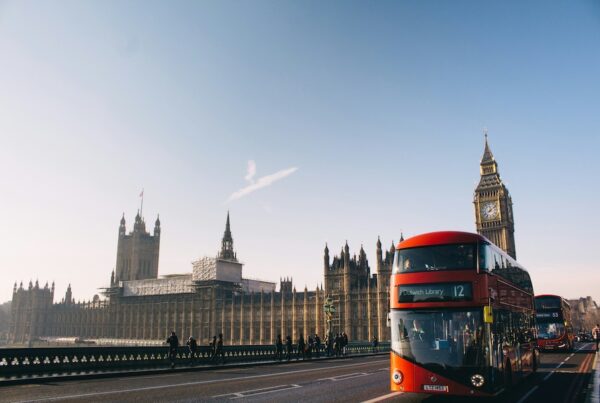Oo, how exciting that you’re heading to London soon! If you want to prepare yourself for your first three days here in London, these are the things you should do before you touch down in Londontown.
*Some of the links in this article will earn a very small commission if you click them and then purchase something.
Figure out how you’ll pay for transportation
There are a couple of ways to “gain access” to public transportation, and knowing ahead of time which payment method you’ll use when in London will help you feel more prepared, especially if you’ll be taking public transportation to get to your accommodation.
Note that everyone in your party needs their own method of payment. Always use the same payment method throughout your entire trip, you will save money this way due to daily caps (when you only get charged a max for the day’s travel and every other journey that day is free.)
Learn how London’s zones (and their daily caps) work in this video…
Oyster Card
My personal preferred method of payment is Oyster Card, mainly because if I mess up and accidentally forget to tap out when leaving a station, I can ask a Transport for London staff member later on to adjust it for me so I don’t get overcharged.
There are two types of Oyster Cards available for visitors to London. You can order yourself a Visitor Oyster Card before you arrive to London. The visitor option gives you some discounts on a few attractions and restaurants, but besides that and the fact that you can order it to get to your home before you get to London, it’s exactly the same as the “regular” Oyster Card. The “regular” Oyster is what Londoners often use, but tourists can also use it, it’s just not available to be shipped ahead of time outside of the UK.
Either Oyster Card is fine for tourists. If you prefer to get your Oyster Card before you arrive to London, you can order the Visitor Oyster Card. If you’re not fussed, just wait until you arrive to London and get one at the airport, train station or most convenience shops around the city.
Fares are exactly the same for both cards, but the Visitor Card costs £5 + shipping, and the normal Oyster costs a £5 refundable fee, which you can get back when you’re done using the card.
Here’s a more in-depth overview of the differences between a regular Oyster and a Visitor Oyster…
Contactless debit/credit card
If you have a debit or credit card that has a chip in it and has the contactless payment feature, you can use this to pay for every method of London public transportation. It’s really easy, just tap it on the yellow reader just as you would an Oyster Card. Fares are exactly the same, and you might even save a little money if you use it every day for a week as there is a “7-day cap” for contactless cards.
Mobile payment
If you have Apple Pay, Android Pay, Barclaycard, Barclays Contactless Mobile or bPay, you can pay for transportation with that, just like you would an Oyster Card or contactless card. This is always my last resort method of payment because if your phone dies and you don’t have that specific card on you, you’ll miss out on the daily cap advantages. Also, some foreign banks don’t allow Apple Pay to be used on London’s public transportation, for some reason.
Travel card
If you’re staying in London for seven days, you might save some money by purchasing a travel card. It’s a bit confusing for a first timer to figure out if a travel card is a better option for you, watch my video below to find out how it works, but if you’re still confused, don’t worry about it and just use one of the other options already mentioned. You won’t spend that much more money.
Get your phone connected
You don’t HAVE to have phone connectivity in order to be able to experience London but it does make things much easier. If you’re using my 3-Day London Itinerary, I highly recommend having 3G connectivity as it’s much easier to use the Digital Map when you’re connected to the internet.
International mobile plan
First, check with your mobile phone provider about an international plan. While most are pretty expensive if you’re coming from anywhere outside Europe, you might be with one of the few companies that are starting to make it more affordable. Be sure to ask the cost and the call, text and data limits, what happens when you reach those limits, and how to get notifications that you’ve reached your limit or to find out how much you’ve spent so far. This will help avoid expensive surprise bills at the end of the month.
Get a SIM
If an international phone plan isn’t an option, your next option is to get a sim card, which is essentially a little card that goes into your phone that connects you to a cell network. By getting a UK SIM, you can make calls, text, and get data at a local rate, so it’s quite reasonably priced.
Be sure to ask your mobile phone provider if your phone is unlocked, which means that it can function with other mobile provider’s SIMs. If it is, you can either pick up a SIM once you arrive to London, or get a free GiffGaff SIM sent to your home so you have it ready once you arrive here.
Pocket Wifi Device
If your smartphone isn’t unlocked, you can opt for a pocket wifi device. This is essentially a small 3G device you can keep in your pocket or bag that you can connect your phone and other devices to for 3G connectivity. This is a good option if you want to be constantly connected, and you usually can connect a few devices at once, so you and whoever you’re traveling with can use it at the same time.
Wifi only
Of course, there’s always the option to only connect when you find free wifi. London is, relatively speaking, ok with offering free wifi. Most coffee shops, cafes and hotels will have it, restaurants mostly don’t. Most tube stations have wifi that’s free for Virgin Media, EE, Vodafone, O2 or Three customers, or you can pay for a daily or weekly wifi pass if you’re not.
Plan transportation to your hotel
If you’ve got a long flight over to London, you’ll likely be really tired and not thinking straight when you arrive here. The last thing you want to do is to try to figure out how to get to your accommodation. I recommend figuring this out before you hop on the plane.
There are multiple airports in London and just about all of them are not even in London, so depending on your needs, where you’re staying, and budget, a taxi or Uber might not be an option for you. But there are many ways to get to and from London from each airport, so don’t worry.
Use CityMapper to figure out what options you have for getting to your accommodation. Be sure to put in the correct airport (there are five), and to adjust the time so that it reflects what time you’ll be arriving to the airport. Google Maps works too, but CityMapper gives costs for each option. The only option it doesn’t account for is National Express coach buses, which are usually fairly cheap, but you’ll have to deal with traffic of course.
If you plan to take one of the “express” trains (Gatwick Express, Heathrow Express, etc.) book tickets in advance for a cheaper rate.
Although this is quite rare in London, also check with your hotel to see if they have an airport shuttle you can take.
Start adjusting your sleep schedule
If you’re coming from a few times zones away, start shifting your sleeping schedule to bring it closer to London’s time zone. For example, if you’re from the east coast of the US, which is five hours behind London, about a week before your trip, start getting up and going to bed earlier, bit by bit. It will make the time zone difference a little less of a shock once you arrive.
Choose something to do on your arrival day
Again, if you’re traveling across a few time zones, you’ll want to plan at least one thing to do in the early evening so that you have something to keep you awake. I don’t recommend over-planning, as you will be tired and a bit out of it, but you want to keep yourself awake until normal sleeping time in London, so even having something as simple as an early dinner reservation will help with this.
Choose which areas to explore
London is really, really big and I hear time and time again from our community that their biggest mistake that they made here is not planning out their itinerary correctly and they ended up spending so much time on public transportation, trekking back and forth across the city because they didn’t realise that everything they planned to do that day was so far apart.
To avoid this, you’ll want to pick one manageable area a day to explore, ideally by foot. If that sounds like a lot of work (it is) then have a look at my 3-Day London Itinerary, as it’s already done all of that work for you and can sort out your first three days.
Here are some areas you should consider but likely have never heard of in the usual guidebook…
Download a transportation app
You’ll live and breathe by a transportation app when you’re here in London. It’s the easiest way to figure out how to get from point A to point B, how long it will take, how much it will cost, etc. I change between CityMapper and Google Maps. CityMapper is better with giving prices, but Google Maps is better with walking directions and it’s what the digital map for my 3-Day London Itinerary is on so it will be easier to just use Google Maps if you’ve got it.
This article is part of my 3 Days in London series, here are some more tips to help you with your first few days in London. Read next:
10 Reasons to Follow an Itinerary During Your First Three Days in London
Top Things to Do With Three Days in London
5 Reasons Not to Use a Free London Itinerary
Pin this to your London board…











Hi there. In looking at your free guide on where to stay I don’t see any bed and breakfast places listed and am wondering if you can recommend any that are budget friendly
Hi, Is there a senior Oyster card available for London travel? We have many of this kind of option in the US.)
Also, we hope to visit Bath and Stonehenge. Can we use our Oyster card for travel outside London?
Thanks!!
Hi Luana! Oyster is just for London. And there’s not a senior discount for visitors, just for Londoners.
Hi Jess,
We are a family of five that will be in London for Christmas and we’ve been watching all your videos to get us ready! One thing on this page, is you didn’t finish a sentence and I’m dying to know what it is:
Under “Contactless Debit/Credit Card”
“…Fares are exactly the same, and you might even save a little money if you use it every day for a week as there is a “7-day cap” for”
Would love to know what that 7-day cap is for!
Thanks!
Myriam
Contactless cards 🙂